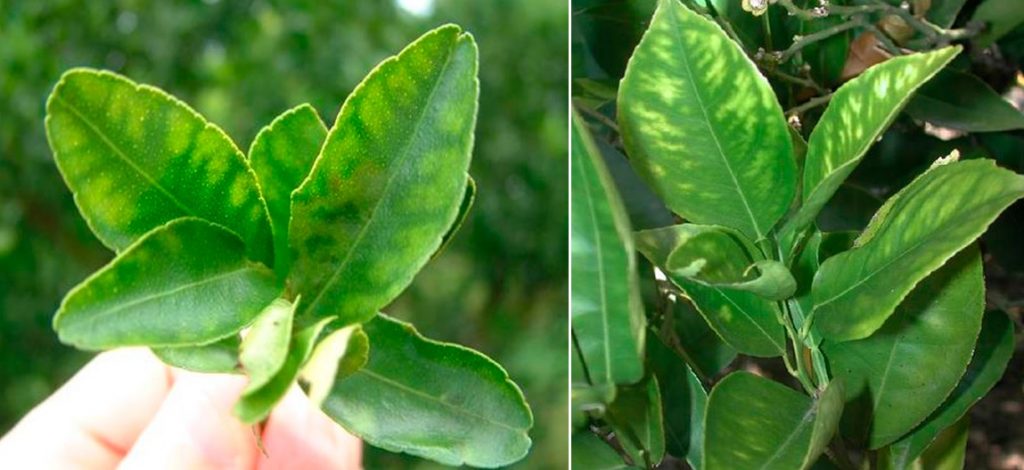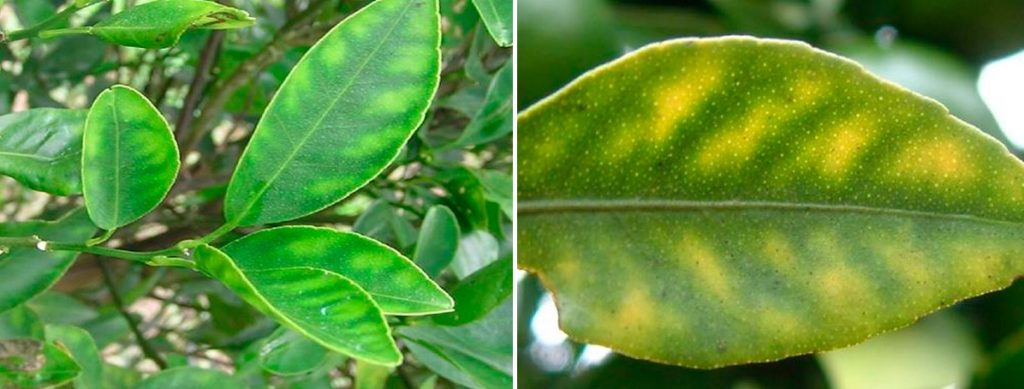Citrus fruits and especially lemon trees are very demanding in terms of nutrients. As they are usually grown on calcareous soils, it is common for them to suffer from micronutrient deficiencies after germination, appearing yellow leaves on lemon tree.
However, the cause of chlorosis in lemon trees may be due to several macronutrients and micronutrients, or the sum of them all.
In this article, we will reveal to you how to detect the cause of yellowing leaves on a lemon tree and fix it quickly.
read more: role of nutrients in citrus fruits.
Contents
Yellow leaves of lemon trees: main causative agents
The main micronutrients in high demand for citrus fruits are iron, zinc and manganese.
Precisely, this triad of microelements behaves very badly in soils with a pH above 7.5, something very common in Mediterranean and southern soils, where limestone and carbonates predominate.
For this reason, it is common for the lemon tree to have yellow leaves, to which macronutrients such as nitrogen and magnesium are also often added, causing chlorosis that is very evident in any type of citrus fruit.
Micronutrient deficiencies: iron, zinc and manganese
 Chlorosis of zinc and manganese. image source: yara
Chlorosis of zinc and manganese. image source: yaraThe zinc and manganese deficiency This usually goes hand in hand, as they behave similarly in soil, exhibiting low absorption due to antagonisms with calcium complexes, carbonates and limestone.
For this reason, it is necessary that in soils with an alkaline pH, zinc and manganese are protected in the form of chelates, the best known being the EDTA chelate.
The presence of yellow leaves in lemon trees caused by zinc and manganese deficiency its occurrence after budding and after fruit set is common.
Zinc and manganese deficiency is relatively easy to detect because an inverted v forms on the lemon leaf, with irregular chlorotic spots on both sides of the leaf, especially on young leaves.
As for ironthis essential micronutrient has a very low mobility in soils that are also calcareous, which is why its application by EDDHA chelate is always recommended.
The chlorosis of this microelement is much more evident, covering almost the entire leaf in yellow but respecting (only in the early stages) the green veins. This chlorosis initially occurs on leaves and young shoots.
The triad of trace elements (iron, zinc and manganese) can also be corrected by foliar applications, but in this case we recommend the use of complexed trace elements to facilitate their assimilation by the leaf.
 Citrus ferric chlorosis. image source: yara
Citrus ferric chlorosis. image source: yaraMacronutrient deficiency: nitrogen and magnesium
We also cannot forget a common cause of yellowing of the leaves of lemon trees, and that is the lack of nitrogen or magnesium as the main macronutrients.
The nitrogen deficiency It is common early in the season because it has spent the whole winter without nutrition and the nitrate nitrogen is easily washed into the soil.
Chlorosis due to lack of nitrogen produces smaller leaves and loses its original greenness, spreading throughout the plant.
In general, the lemon tree is visibly stunted and easy to identify and correct, since nitrogen, especially in nitric and ammoniacal form, is very well absorbed by the roots, and urea is formed very well by the leaves.
In reference to magnesium deficiency, the visual symptoms of leaf yellowing can be confused with those of zinc or manganese. However, the magnesium initially creates inverted V-shaped chlorotic borders on the formed leaves.
It’s the main difference: Magnesium chlorosis of adult leaves initially and symptoms of zinc and manganese chlorosis of new leaves, mainly.
 Magnesium chlorosis of citrus fruits. image source: yara
Magnesium chlorosis of citrus fruits. image source: yaraTo differentiate magnesium deficiency from zinc and manganese, which are obviously very similar, we will use the following trick:
- Deficiency in new shoots and young leaves: associated with zinc and manganese.
- Deficiency in adult leaves: associated with magnesium.
The occurrence of yellow leaves in lemon trees is usually more common due to a lack of zinc and manganese compared to magnesium.
Other Causes of Yellow Leaves in Lemon Trees
In many other cases, the causes of having a lemon tree with chlorosis and showing yellow leaves can be due to other factors not related to nutrition and correction with fertilizers.
Yellow leaves due to lack of light
Lack of light in citrus trees is the cause of a common and widespread chlorosis throughout the tree. We are talking about a tree with high light needs and even direct sun exposure, so we can think about what nutrient we will use to correct the yellowing of the leaves of our lemon tree, but we will not solve anything.
In a lemon tree planted in the garden, it is rare, unless we have done our homework badly, because should always be grown without any shady obstacles (large trees, houses, roofs, etc.).
However, a container-grown citrus fruit, such as a tangerine, can be found in a poorly lit area. Gradually we will notice how a generalized chlorosis and loses its natural greenness.
The solution is simple, move it to an area with much more access to light.
